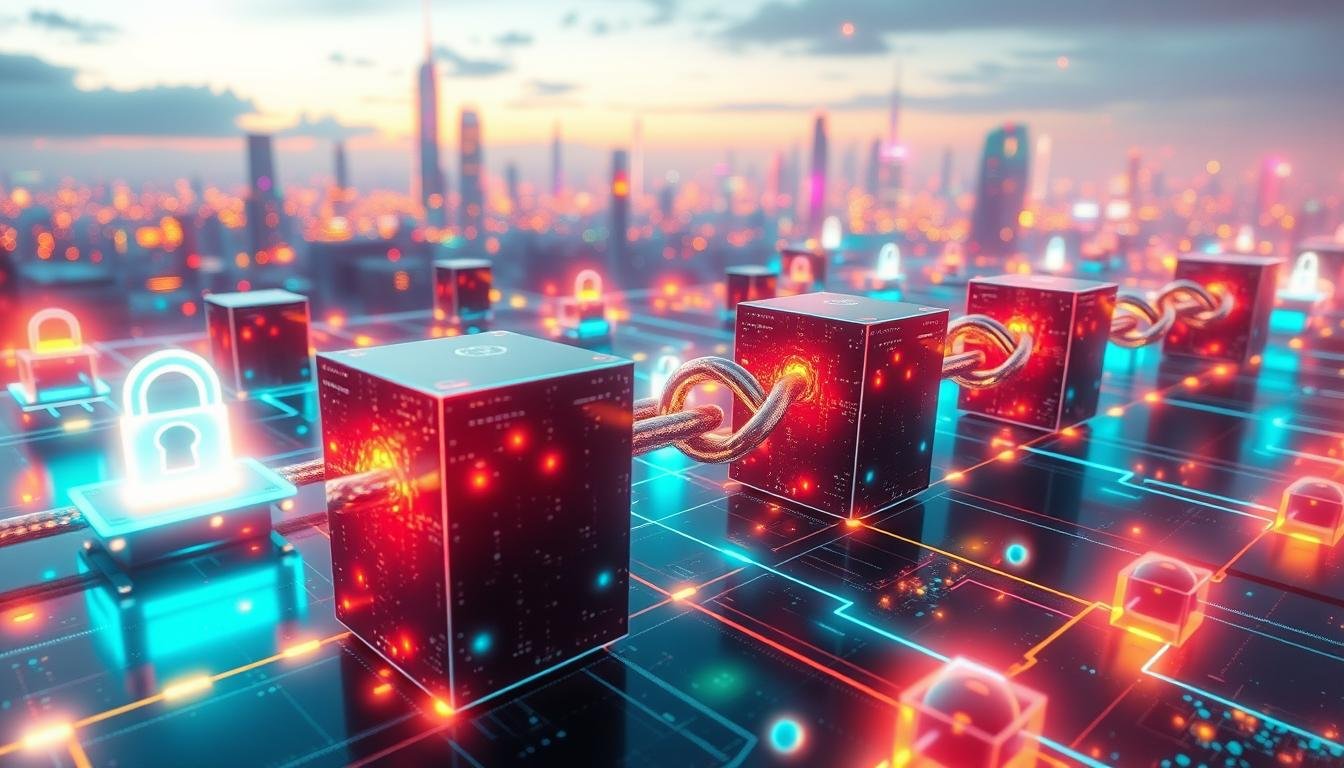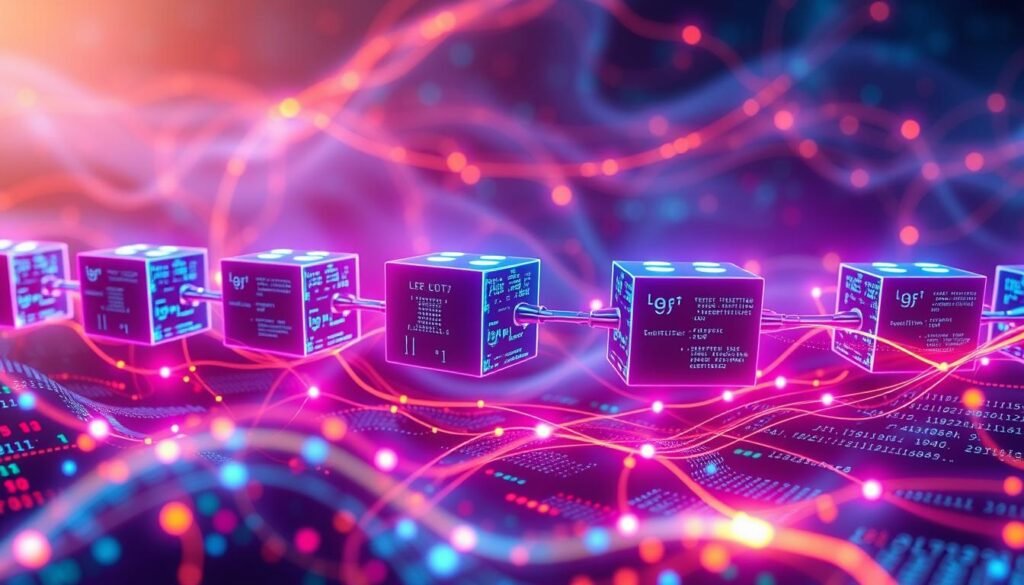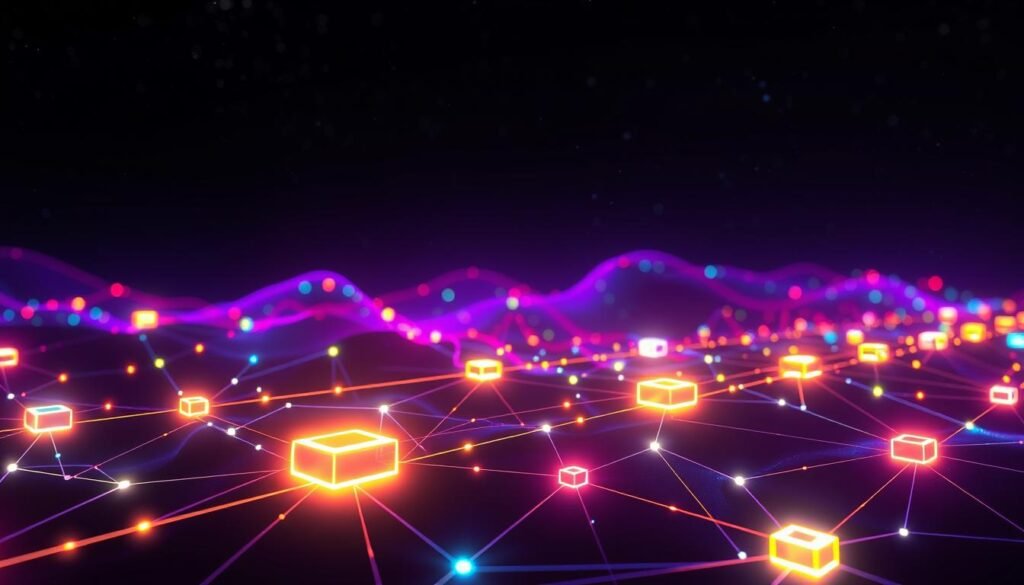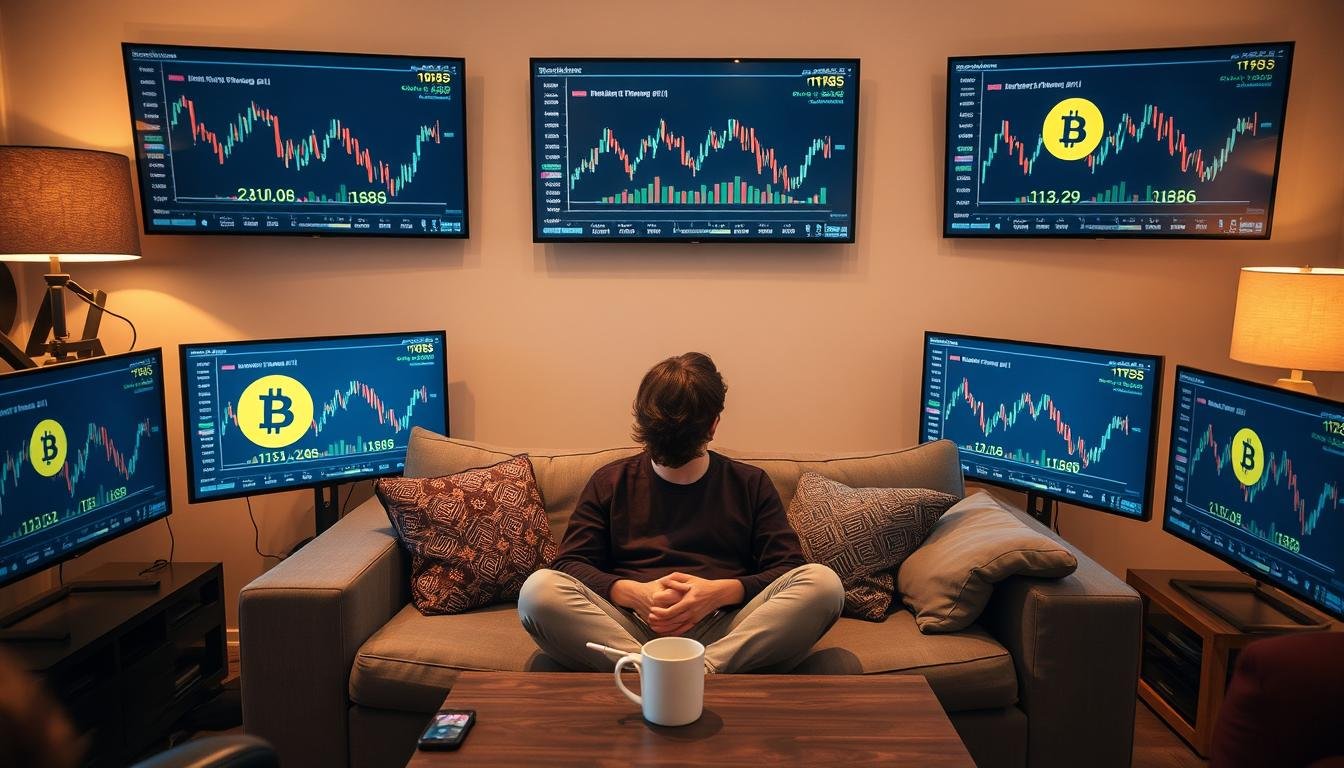What Is A Blockchain? – A Beginner’s Guide

Many people talk about blockchain, but what does it mean? This guide will explain it in simple terms. Blockchain is a new way to keep records that can't be changed once they're set.
It's like a digital book that many computers share. This makes it safe and honest. It's used in many areas, like money and goods.
Some think blockchain only means Bitcoin. But it's much more than that. It's about keeping things safe and true.
We'll dive deeper into blockchain soon. By the end, you'll know what it is and how it works.
- Blockchain is a decentralized, digital ledger system.
- It records transactions across multiple computers to ensure immutability.
- Blockchain technology is widely applicable, not limited to cryptocurrencies.
- This guide will simplify the complex concepts behind blockchain.
- Understanding blockchain is crucial for modern digital literacy.
Understanding Blockchain Technology
Blockchain technology changes how we manage and keep data safe. It brings new levels of openness, spread out control, and unchangeable records. These traits make it safer and more trustworthy in many fields.
Basic Blockchain Definition
Blockchain is a digital book system that logs deals on many computers. It works without one big boss, making it safer from fraud. Each deal is locked to the last one, making a chain of data that can't be changed.
Key Characteristics of Blockchain
- Decentralization: It's not like old databases. Blockchain uses many computers, not one boss.
- Immutability: Data on blockchain can't be changed or erased. This keeps data true and trusted.
- Transparency: Everyone in a blockchain network sees the same data. This makes things clear and fair.
These traits are key to making blockchain safe. They help keep data right, steady, and dependable.
History and Evolution of Blockchain
Blockchain started with Bitcoin in 2009 by Satoshi Nakamoto. It showed how blockchain could make money safe and open. Since then, blockchain has grown to include finance, supply chains, and health.
Big steps in blockchain history include Ethereum in 2015. It brought smart contracts and apps. Now, more places want blockchain for better safety and work flow.
Blockchain keeps getting better. Its uses are growing, showing new ways to solve problems with its special traits.
How Does Blockchain Work?
Understanding blockchain is key to seeing its big impact. We'll dive deep into how it works. This includes its structure, how it agrees on data, and how it's different from old databases.
Blockchain Structure Explained
Blockchain is made up of blocks linked in order. Each block has a special code, data, and the hash of the last block. This makes a strong chain. Changing any block would change everything after it, keeping data safe and unchanged.

The Role of Consensus Mechanisms
Consensus mechanisms are key for checking transactions and keeping the blockchain safe. They make sure everyone agrees on transactions before they're added. Two main types are Proof of Work (PoW) and Proof of Stake (PoS).
- Proof of Work (PoW): This method needs miners to solve hard puzzles to check transactions. It's energy-heavy but very secure, used in Bitcoin.
- Proof of Stake (PoS): This method lets people check transactions based on how many coins they have. It's better for the environment and is used in newer projects like Ethereum 2.0.
Blockchain vs Traditional Database
Blockchain and traditional databases are very different. Traditional databases have one person in charge, while blockchain is run by many. This makes blockchain safer and more open.
| Aspect | Blockchain | Traditional Database |
|---|---|---|
| Architecture | Decentralized | Centralized |
| Data Integrity | Immutable | Mutable |
| Security | Highly Secure | Less Secure |
| Transparency | Open and Verifiable | Closed and Controlled |
From this comparison, blockchain's decentralized and unchangeable nature is a big plus. It's better than old databases for things that need to be very secure and trusted.
Benefits of Blockchain
Blockchain technology has many advantages. One big benefit of blockchain is better security. It uses special codes and is spread out, keeping data safe and stopping changes.
Another big plus is cost reduction. Old ways of doing things often cost more because of middlemen. Blockchain cuts out these middlemen, saving time and money.
Blockchain also makes things faster and more efficient. It can do transactions in minutes, unlike old banking systems that take days. This is great for businesses that need quick and clear money moves.
Blockchain works well in many areas like healthcare, supply chain, and real estate. For example, in healthcare, it helps keep patient records safe and right, stopping mistakes and cheating.
“Blockchain technology drastically reduces operational costs by eliminating the need for intermediaries and simplifying the verification process,” explains Paul Brody, EY Global Blockchain Leader.
In short, blockchain's benefits are clear. It brings better security, lower costs, and faster work. These benefits of blockchain add a lot of value for everyone, making it a big deal in many fields.
Applications of Blockchain Technology
Blockchain technology is changing many areas. It solves old problems in new ways. This part talks about where blockchain is making a big difference.
Blockchain in Finance
Blockchain is changing finance a lot. It has brought in new digital money like Bitcoin and Ethereum. These digital coins work without banks, making things faster and safer.
Smart contracts also help. They make deals happen without needing people. This cuts down on mistakes and saves money. Banks use blockchain to fight fraud and follow rules better.
Blockchain in Supply Chain Management
Blockchain is also big in supply chains. It makes it easy to see where things come from. This helps keep products real and cuts down on fake stuff.
Big companies like Walmart and IBM are using it. They say it makes their work better and builds trust with others.
Other Emerging Blockchain Applications
Blockchain is also changing other areas. In healthcare, it keeps patient records safe. This makes it easier for doctors to work together.
It's also making voting safer. And it's helping the Internet of Things (IoT) talk better and share data safely. These new uses show how blockchain can change our lives.
| Industry | Key Blockchain Applications |
|---|---|
| Finance | Cryptocurrencies, Smart Contracts, Fraud Reduction |
| Supply Chain | Product Traceability, Logistics Optimization, Counterfeit Reduction |
| Healthcare | Secure Patient Records, Data Sharing |
| Voting | Secure Electoral Processes |
| IoT | Enhanced Device Communication, Data Security |
What Is A Blockchain?
Blockchain is a new way to keep digital records safe and open. It's like a big book of transactions that everyone can see. This book is made up of blocks that are linked together in order.
This makes it hard to change the records. It also means we don't need middlemen in many cases. This is what makes blockchain special.

Some people think blockchain only means Bitcoin. But it's much more than that. It's a way to store data in a way that's safe and open to everyone.
Blockchain is not completely secret. While it keeps your identity hidden, every transaction can be traced. This is because of special codes used in blockchain.
Also, blockchain uses rules that everyone agrees on. This makes sure all transactions are safe and true. This is what makes blockchain strong.
To really get blockchain, you need to understand its structure. It has nodes, or computers, that all have the same records. If someone tries to change the records, everyone has to agree. This makes it very hard to cheat.
These features make blockchain very important for the future of the internet. It's a key part of how we will do things online.
Conclusion
This article has shown us how big blockchain technology is. It talks about its history, how it works, and its uses. It's not just a new tech; it's a big change in how we handle data and make deals.
Looking ahead, blockchain has a lot to offer. It can make our money systems better and change how we manage things. But that's just the start. Blockchain is getting better and will soon be a big part of our lives.
Knowing about blockchain helps us get ready for new tech. It also helps us use it well. As blockchain grows, staying up-to-date is key. There's a lot more to learn and see in this exciting field.





